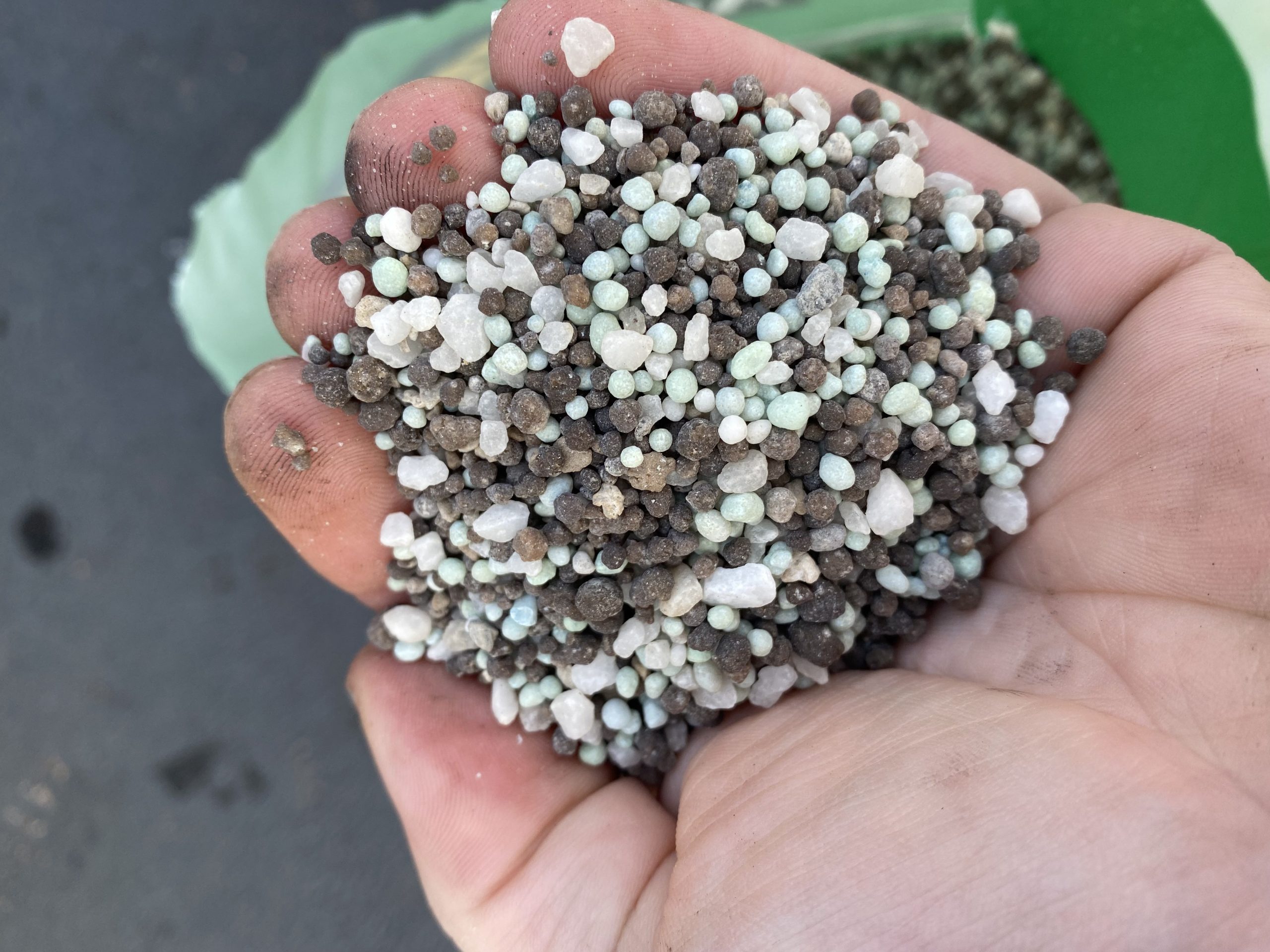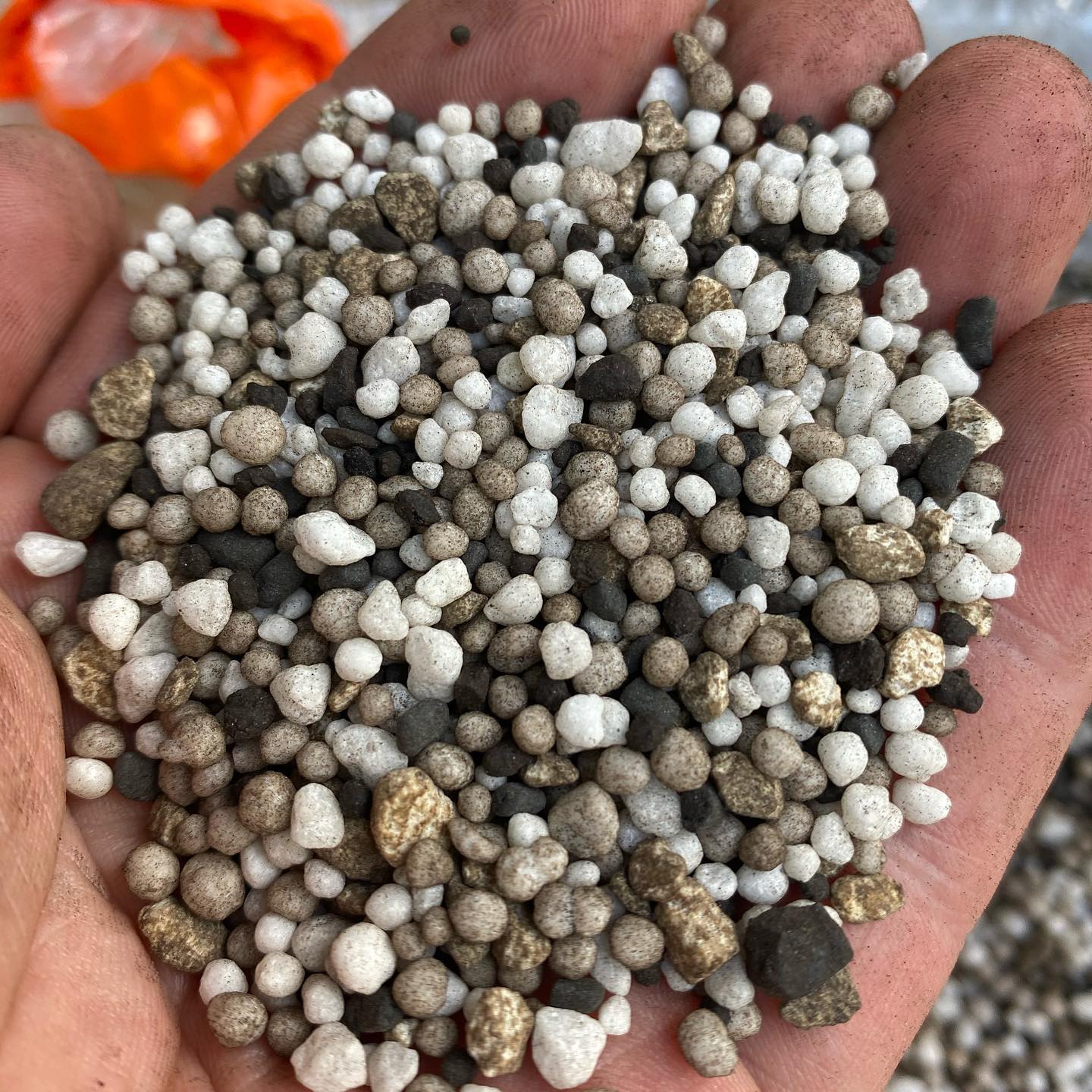If you search online, you will literally find a myriad of answers to the question, “when to fertilize lawn.” Some say fertilize heavily in the spring, and some say in the fall. Moreover, you’ll find conflicting answers about when to fertilize lawns from reputable experts. So, what is it? What’s the best time to apply fertilizer?
Before we offer our experienced-backed response, keep in mind that your specific climate and grass type may impact when you apply fertilizer to your lawn. The frequency for fertilizing grass and the type of fertilizer you choose may also affect your lawn fertilizer schedule. That aside, our lawn fertilization recommendations are based on general fertilizer information designed for most grass types.
When Is the Best Time to Fertilize Your Lawn?
The best time for applying fertilizer to your lawn is in the spring, between March and May. Soil temperatures should be 55 degrees Fahrenheit or even warmer before applying fertilizer to cool-season grasses. You can wait until late spring or early summer for warm-season grasses to apply lawn fertilizer.
Spring Fertilizer
Spring is a great time to apply fertilizer to lawns because they’re emerging from winter dormancy and can benefit from a nutrient boost to support their active growth. You can give your lawn its first feeding in early spring. Consider using a soil thermometer to ensure your soil is above 55 degrees Fahrenheit before you apply fertilizer.
Summer Fertilizer
During the summer, applying fertilizer is safe if your lawn is growing well and is healthy. If your lawn is stressed or dormant, don’t apply nitrogen fertilizer. Choose a safer option like non-burning fertilizer or slow-release fertilizers for your lawn.
Fall Fertilizer
You can use fertilizer in the fall to store nutrients during the winter to ‘winterize’ your soil. Also, during early fall, your lawn may be searching for nutrients to help it repair itself from summer damage caused by mowing, foot traffic, etc…
Types of Fertilizers
The main fertilizer you can apply to your lawn includes liquid, granular, organic, and synthetic.
Granular Fertilizer
Many people like to use granular lawn fertilizer because it’s either time-release or slow-release. This basically means that it doesn’t feed your lawn essential nutrients all at once; it releases them gradually, which guards against burnout. Too much fertilizer will burn your grass. Slow-release fertilizer is preferable for many busy gardeners because you don’t have to make as many applications.
Liquid Fertilizer
Liquid lawn fertilizer is also popular because you can apply the product easily with a garden hose rather than a drop spreader. Unlike granules that need time to break down in the soil (hence, their ‘slow release’ action), liquid fertilizer delivers immediate essential nutrients to grass roots.
Organic Fertilizer
Organic fertilizer is made from living or once-living natural material (i.e. compost, grass clippings, bone meal, manure, etc…). Organic fertilizers may take more time to break down than synthetic nutrients, but they also tend to have more micronutrients, such as calcium.
Synthetic Fertilizer
Synthetic lawn fertilizers are formulated with essential nutrients your lawn needs, like nitrogen, phosphorus, and potassium. Synthetic formulations of fertilizers offer specific nutrient ratios, which may be important if your lawn is deficient in particular nutrients. With synthetic lawn fertilizer, you can feed it exactly what it needs to become a healthy lawn. Read the fertilizer label to find out its precise ingredients.
To choose the best fertilizer for your lawn, it may be helpful to conduct a soil test. A soil test enables you to see what nutrients your lawn needs–and which ones it doesn’t. You don’t want to deliver more fertilizer than your lawn needs, or you can burn out the roots and promote weed growth. To choose the best fertilizer for your lawn, you need to be aware of your lawn type and its specific nutrient needs. Feeding your lawn proper nutrients is part of a good lawn care routine.



Understanding Your Grass Type
Grass type matters when it comes to selecting lawn fertilizers. Cool-season grasses and warm-season grasses have different needs.
Cool Season Grasses
Plan to fertilize cool-season grasses like Kentucky bluegrass in spring between March and May and then again in fall between September and November.
Warm Season Grasses
Apply lawn fertilizer to your cool-season grasses when it’s fully greened up after its winter dormancy. In the deep south, where there isn’t a winter dormancy period, warm-season grasses can be fertilized in early April. Fertilize your warm-season grass during the summer months when it’s actively growing and into the fall.
Special Note about Warm Season Grasses and Fertilizer
Check with your city before you apply fertilizer to your warm-season grass. Some cities have fertilizer blackout dates when residents are barred from applying nitrogen fertilizer or fertilizers with phosphorus when they’re more likely to pollute waterways during periods of heavy rainfall. In Florida, residents throughout the state are forbidden to apply fertilizer containing nitrogen and phosphorus from June 1 to Sept 30.
When to Fertilize Lawn FAQs
When should you NOT fertilize your lawn?
You should not fertilize your lawn if it’s already been fertilized recently. Too much fertilizer is not conducive to a healthy lawn. Rather, it can burn your grass roots. Also, do not fertilize your lawn when the weather forecast is for extremely high temperatures or heavy rainfall.
How many times should you fertilize your lawn?
Generally speaking, opt to apply lawn fertilizer 2-4 times per year. However, take the health conditions of your own lawn into account. Be sure to research the specific care needs of your cool-season grass or warm-season grass before you fertilize your lawn to be safe.
When should you fertilize your lawn in spring?
You can fertilize your lawn in spring when the soil temperatures reach or exceed 55 degrees Fahrenheit. This may be early spring in the south or late spring in the north.
Should you fertilize your lawn before or after mowing?
Plan to mow your lawn before you apply fertilizer. You may also want to aerate your lawn before your first fertilizer application.

